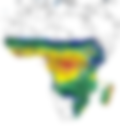-
Climate Data
- ICPAC website
- Persiann Rainfall Data
- RFE Rainfall Data
-
CHIRPS Rainfall
Coverage: Global / Africa. Climate Hazards Group InfraRed Precipitation with Station data (CHIRPS) is a 35+ year quasi-global rainfall data set. Spanning 50°S-50°N (and all longitudes) and ranging from 1981 to near-present. CHIRPS incorporates in-house climatology, CHPclim, 0.05° resolution satellite imagery, and in-situ station data to create gridded rainfall time series for trend analysis and seasonal drought monitoring. More information.
- ECMWF S2S database
- The Earth System Grid Federation (ESGF)
- KNMI Climate Explorer
- IMERG Rainfall
-
GFS Forecast Rainfall
Coverage: Global. The Global Forecast System (GFS) is a weather forecast model produced by the National Centers for Environmental Prediction (NCEP) by NOAA. Dozens of atmospheric and land-soil variables are available through this dataset, from temperatures, winds, and precipitation to soil moisture and atmospheric ozone concentration.
-
US Government Open Data Initiative
In total, 377 climate datasets reside in the US government open data initiative. In order to meet the challenge of a changing climate, the US Climate Resiliency toolkit simplifies the process of building resilient communities. For example, you can access environmental vulnerabilities by obtaining climate projections to the year 2100. By searching your zip code in the Climate Explorer, you can understand your risk and better protect your investments further down the road.
-
NASA Earth Observatory
Massive collection of Earth science data. It’s through the NASA Earth Observatory where anyone can track 16 climate factors such as aerosols, temperature and carbon all the way back to 1999. The best part is how NASA makes it easily understandable for the public to consume. If you’re looking for another flavor to study our planet from space, check out NASA Earth Observations (NEOs).
-
European Space Agency Climate Change Initiative (CCI)
There’s been an enormous push to track our changing climate in Europe. After all, it’s the Copernicus Mission that dedicated an entire fleet of satellites to measuring our climate from space. The European Space Agency Climate Change Initiative (CCI) leverages 40 years of satellite observations, by merging past mission data.
- ICPAC Data Library and Maproom
- Copernicus Climate Data Store (CDS)
- SCIPEA Climate Data Portal maproom
-
IRI maproom and data library
Coverage: Global. The Maproom is a collection of global maps and other figures that monitor climate and societal conditions at present and in the recent past. The IRI Data Library is a powerful and freely accessible online data repository and analysis tool that allows a user to view, analyse, and download hundreds of terabytes of climate-related data through a standard web browser. Examples of data accessible: precipitation, temperature, heat waves, ocean temperature, seasonal and sub seasonal forecast.
-
Disaster Risk Management
- Disaster Loss Database
- INFORM: Index for Risk Assessment
-
UN Spider
Space-based information for Disaster Management and Emergency Response.
-
Emergency Events Database (EM-DAT)
EM-DAT contains essential core data on the occurrence and effects of over 22,000 mass disasters in the world from 1900 to the present day. The database is compiled from various sources, including UN agencies, non-governmental organisations, insurance companies, research institutes and press agencies.
-
Earth Observation
-
NASA Earth Data Search
NASA’s Earthdata Search provides online access to multiple collections of NASA’s EOSDIS data (Earth Observing System Data and Information System).
-
Remote Pixel
All the images can be visualised via Remote Pixel Viewer, which provides a list of default band combinations, as well as additional image enhancement tools alongside many different basemaps. You won’t be able to download the visualisation results but you can take a screenshot.
-
NASA Earth Data Search
-
Environmental Monitoring Data
-
Soil Moisture to Rain (SM2RAIN) Datasets
Rainfall products obtained from satellite soil moisture data through the SM2RAIN algorithm (Brocca et al., 2014). The more recent datasets have improved spatial-temporal resolution.
- ICPAC Geoportal
-
GMES project wesite & geoportal
Coverage: ICPAC region. Examples of data accessible: Land Use Land Cover, Land Cover Change, NDVI, CHIRPS, FEWSNET, DMP, fAPAR. Description: At ICPAC, GMES & Africa project is developing tools and products for monitoring forests, agriculture, rangelands and Protected Areas. The project also makes available terrabytes of satellite derived data made available through EUMETCast
-
Copernicus Services
Coverage: Global. Examples of data accessible: global land cover, ndvi, dmp, energy, temperature, sea surface height, sea salinity, CAMs global reanalysis. Description: You can access Sentinel Images and EO products from the Corpenicus services. Copernicus has six services and data and/or products is available from these six services. The services are: Land, Marine, Atmosphere, Climate, Emergency and Security. Except for Security, the other services have products that cover the global extent. Topics include: Atmosphere Data, Marine Data, Land Data, Emergency Data.
- VITO Remote Sensing & Data Products
- Sentinel Hub (Satellite imagery)
- Copernicus Open Access Hub (Satellite imagery)
- VITO (Satellite imagery)
- USGS Earth Explorer (Satellite imagery)
-
UNEP Environmental Data Explorer
Often, data seekers often overlook the enormous wealth of climate change data from the United Nations Environment Program (UNEP). UNEP Environmental Data Explorer holds more than 500 different variables for the world to explore. Topics: Agriculture, Carbon dioxide emissions, Disasters, Endangered species, Energy, Greenhouse gases, Living planet index, Methane emissions, Nitrous oxide emissions, Population, Protected areas.
-
FAO GeoNetwork
The Food and Agriculture Organization of the United Nations Geographic Network (FAO GeoNetwork) consists of 247 climate data sets. All data is spatial in nature. Not only does FAO GeoNetwork provide a wide range of spatial data, but it also covers satellite imagery, interactive maps and related applications. Topics: Biodiversity hotspots, Carbon sequestration, Cropland expansion, Deforestation, Koeppen climate classification, Protected areas.
- NASA’s Socioeconomic Data and Applications Center (SEDAC)
-
OECD Environment Data
The OECD knowledge hub for climate data analysis is a great resource with global data for the following sectors: Forest resources, Greenhouse gases, Green households, Population, Waste, Water withdrawal.
-
UNEP GRID Arendal (Graphic Resources)
GRID-Arendal graphics are free for attributed use. Please link the source to our site, credit the author, year and GRID-Arendal. All graphics are also available through flickr at www.flickr.com/photos/gridarendal. Topics such as: Ecosystem Services, Climate Change Impacts (Health, Agriculture, Landscape)
- USGS Evapotranspiration Data
-
Soil Moisture to Rain (SM2RAIN) Datasets
-
Flood Maps
- Near Real Time (NRT) Global Flood Mapping
- World Resources Institute’s Aqueduct
-
GLOFAS: The Global Flood Awareness System
The Global Flood Awareness System (GloFAS), jointly developed by the European Commission and the European Centre for Medium-Range Weather Forecasts (ECMWF), is a global hydrological forecast and monitoring system independent of administrative and political boundaries.
-
Hydrological Data
- Time series of water levels in the rivers and lakes around the world
- Space-based Measurement of Surface Water
-
Database for Hydrological Time Series of Inland Waters (DAHITI)
The Database for Hydrological Time Series of Inland Waters (DAHITI) was developed by the Deutsches Geodätisches Forschungsinstitut der Technischen Universität München (DGFI-TUM) in 2013 to provide water level time series of inland waters. Today, DAHITI provides a variety of hydrologial information on lakes, reservoirs, rivers, and wetlands derived from satellite data.










































